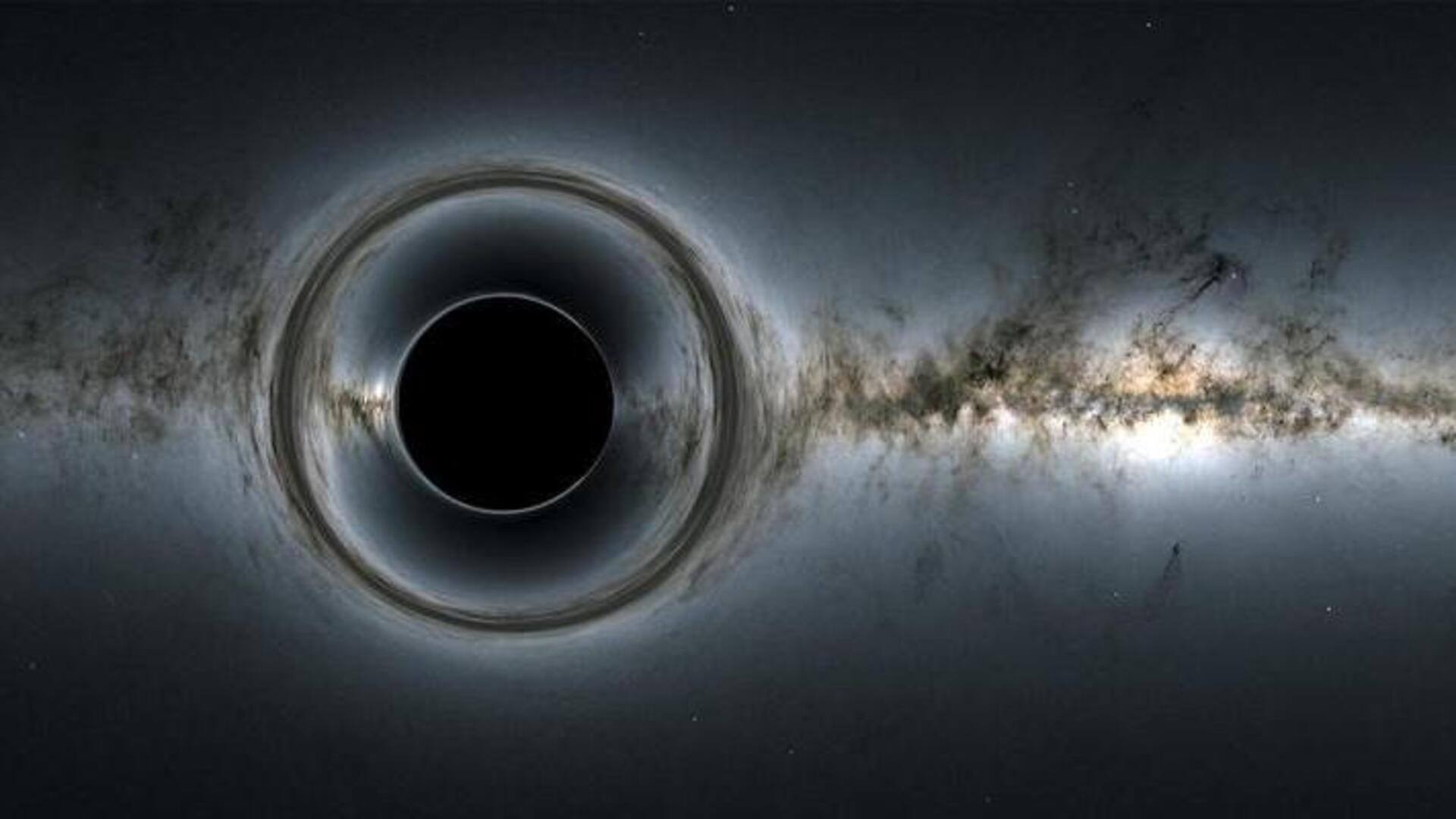
Top 7 exciting black hole revelations from 2023
What's the story
Black holes are among the most mysterious objects in the universe. They are not directly observable to astronomers. These cosmic entities are studied based on the gravitational influence they exert on their surroundings, like stars and galaxies. In 2023, several groundbreaking discoveries were made, ranging from the first-ever image of a black hole jet to the largest supermassive black hole. Let's delve into the most significant black hole developments of the year, per Space.com.
1
One of the largest black holes ever
In March, scientists discovered a supermassive black hole at the heart of the elliptical galaxy Abell 1201 BCG, situated 2.73 billion light-years away. It ranks among the largest black holes ever found, with a mass equal to 30 billion times the Sun's. "This particular black hole...is one of the biggest ever detected and on the upper limit of how large we believe black holes can theoretically become, so it is an extremely exciting discovery," said James Nightingale, from Durham University.
2
First-ever image of a black hole jet
In April, a focused burst of energy emanating from the M87 supermassive black hole became the first black hole jet to be directly imaged. Eduardo Ros, a scientist at the Max Planck Institute for Radio Astronomy, said, "We plan to observe the region around the black hole at the center of M87 at different radio wavelengths to further study the emission of the jet." More observations will be conducted in the coming years.
3
AI boosts first image of black hole from 2019
In April, AI was employed to enhance the first-ever image of a black hole, captured in 2019. The "fuzzy orange donut" seen in the image from 2019 was slimmed down to a thinner "skinny golden ring" with the help of machine learning. The AI-enhanced image of the supermassive black hole could help better understand its characteristics. To improve the image, researchers used a technique called principal-component interferometric modeling (PRIMO). This technique helps compensate for the missing information.
4
Echoes heard from Earth's nearest supermassive black hole
In June, NASA's IXPE (Imaging X-ray Polarimetry Explorer) telescope revealed that Earth's nearest supermassive black hole, Sagittarius A*, came alive only 200 years ago. Sagittarius A* (pronounced 'Sagittarius A star'), lies at the heart of the Milky Way at a distance of over 25,000 light-years from Earth. The black hole is believed to have devoured cosmic material, releasing a bright flash of X-rays which was then reflected by the gas clouds in its vicinity.
5
Closest pair of supermassive black holes
In October, scientists discovered the closest yet pair of supermassive black holes. These two black holes weigh 54 million and 6.3 million times the Sun's mass. As of now, these cosmic objects orbit each other at a distance of 1,600 light-years. However, in about 250 million years, these black holes are expected to spiral toward each other and merge. The resulting black hole would weigh a whopping 60 million solar masses.
6
Tech boost to detecting black hole mergers
Merging black holes, among other powerful events in the universe, send out what's called gravitational waves, or ripples in space-time. In October, the Laser Interferometer Gravitational-Wave Observatory (LIGO) received an upgrade that surpassed the "quantum limit." This enhancement allows LIGO to detect even smaller ripples in space from more distant black hole mergers. "We can now reach a deeper universe and are expected to detect about 60% more mergers than before," LIGO lab researcher Wenxuan Jia told Space.com.
7
Black holes 'recycle' material
In November, astronomers discovered that supermassive black holes could "recycle" material. This was based on observations of a black hole lying at the core of the Circinus Galaxy, located around 13 million light-years away. The black hole was found to consume only about 3% of the cosmic material that fell toward it and pushed the rest away with the energy it generated. However, the material that's shoved away tends to fall back into the black hole, much like a fountain.